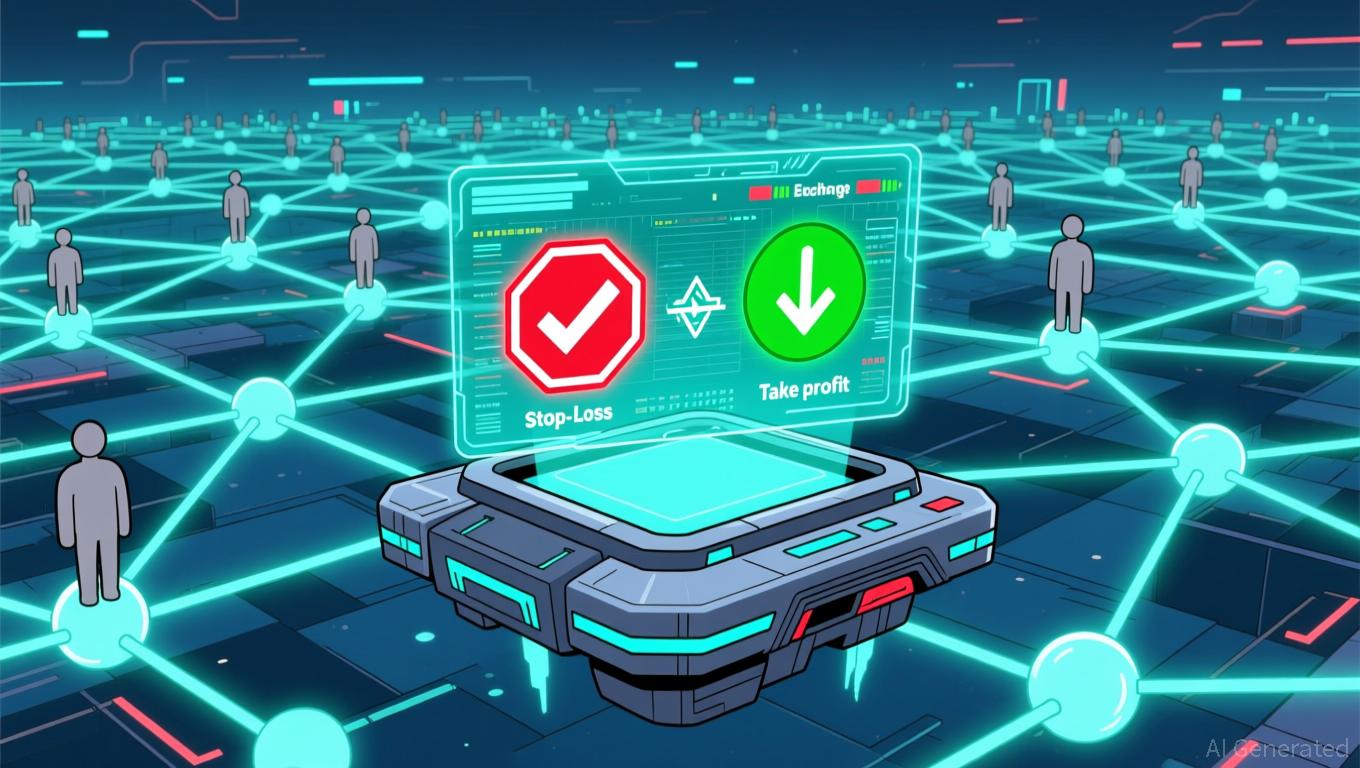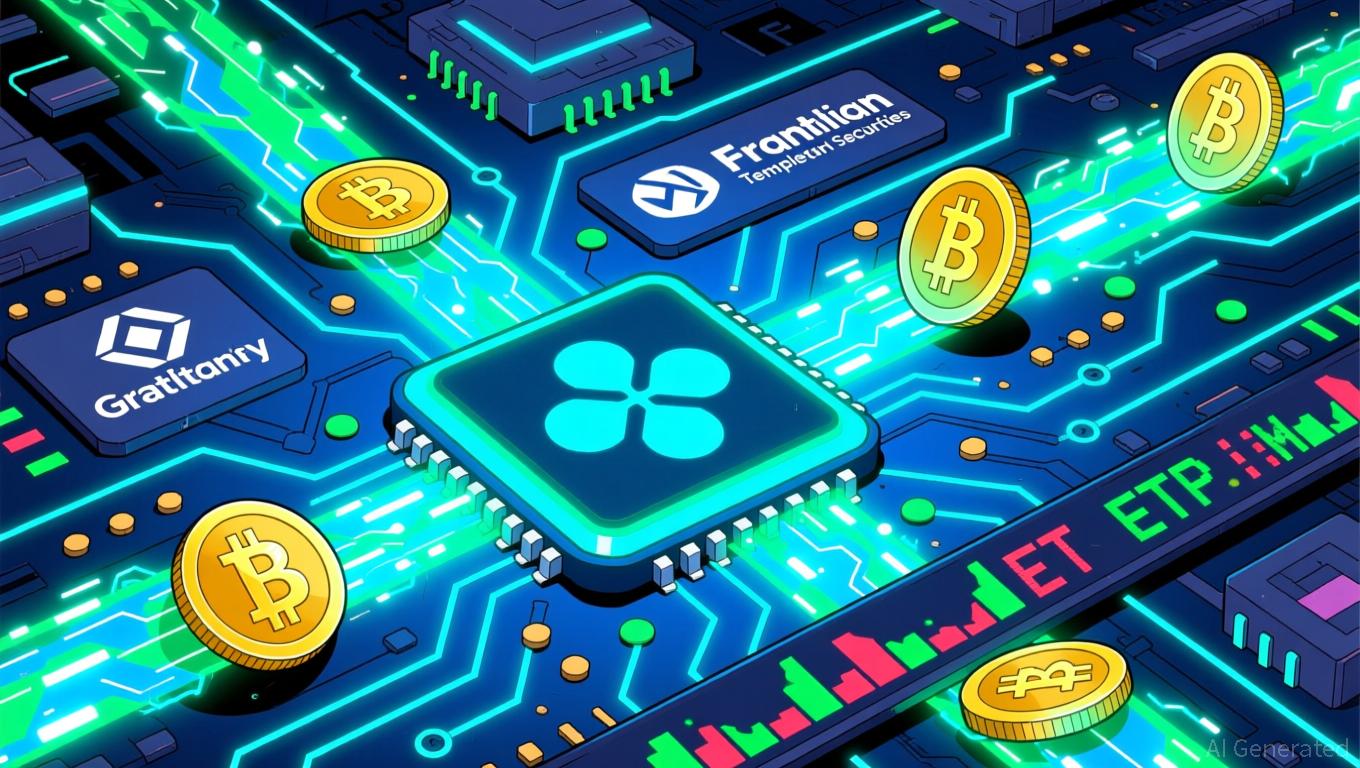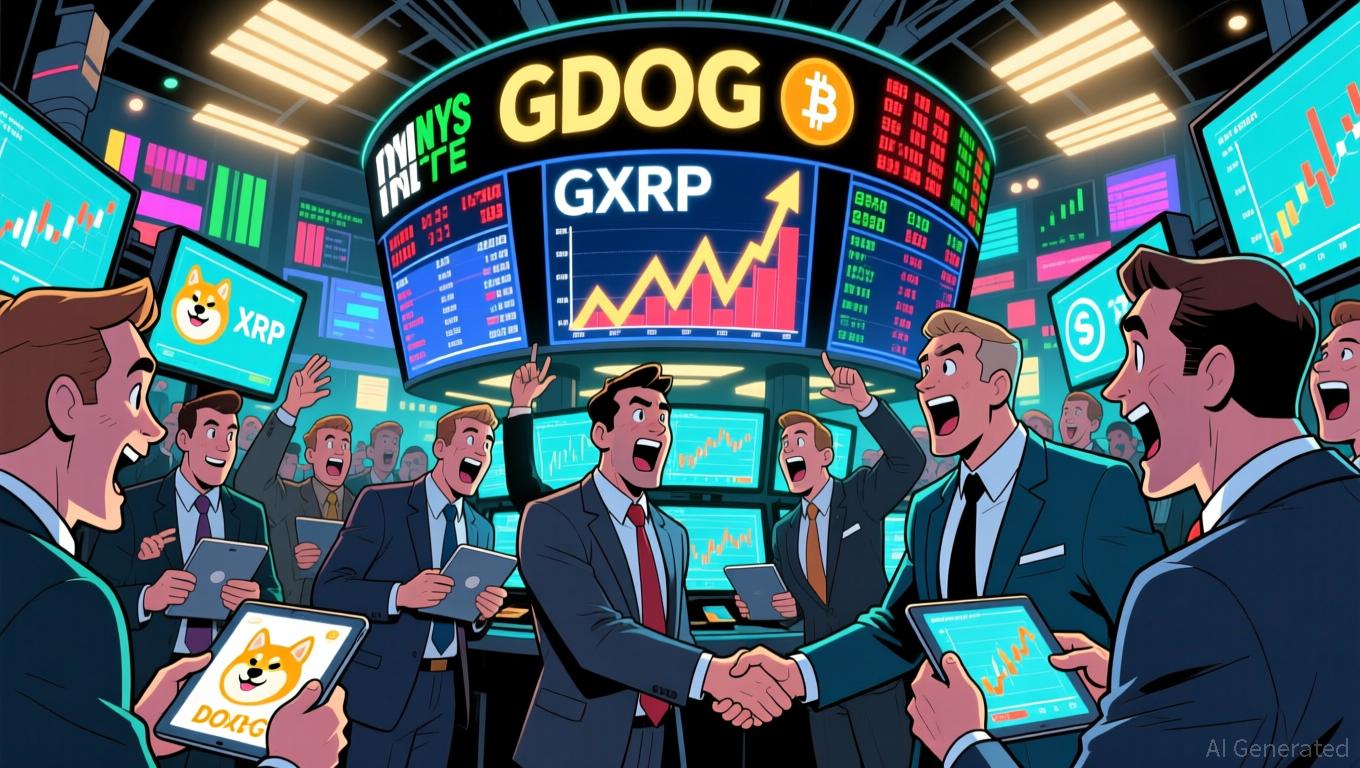Vitalik Buterin's Latest Remarks on ZK and Their Impact on Ethereum's Prospects: Key Investment Prospects in Zero-Knowledge Technology
- Vitalik Buterin positions zero-knowledge (ZK) technology as Ethereum's foundational pillar for privacy, scalability, and security in 2025. - His three ZK pillars include private account abstraction, cryptographic synergy (MPC/FHE/TEE integration), and modexp replacement to reduce computational overhead. - ZK infrastructure now holds $28B TVL, with projects like zkSync, StarkNet, and ZKP leading adoption through EVM compatibility and hybrid on-chain/off-chain models. - Investors gain opportunities in ZK p
Buterin’s Perspective: Privacy, Scalability, and Robustness
Buterin’s latest focus on ZK technology revolves around three main areas: private account abstraction, integration with advanced cryptographic solutions, and enhancements in scalability.
Private Account Abstraction: Buterin believes ZK proofs should empower users to manage their assets confidentially, without revealing wallet addresses. This would establish a universal authorization system for both on-chain and off-chain platforms, effectively separating identity from transaction details
according to Buterin's vision. This change would make privacy widely available, accessible from both desktop and mobile devices, eliminating the need for deep technical skills.Cryptographic Synergy: Buterin supports merging ZK proofs with multi-party computation (MPC), fully homomorphic encryption (FHE), and trusted execution environments (TEE). This combination could create systems resistant to coercion, where
sensitive data remains encrypted even during computation. For instance, FHE would allow ZK proofs to process encrypted data, while TEEs could validate computations within secure hardware, increasing trust and security.Scalability via Modexp Replacement: A technically significant proposal is to substitute Ethereum’s old modular exponentiation (modexp) precompile. This function, crucial for ZK-rollups and ZK-EVM proofs, currently increases computational requirements by up to 50 times. By rewriting modexp in EVM code—even if it means higher gas costs—Buterin’s goal is to make ZK operations more efficient, lowering network strain and speeding up adoption
according to Buterin's proposal.
ZK Infrastructure: From Concept to Practical Use
The ZK infrastructure within Ethereum is advancing quickly. By 2025,
Top Investment Prospects
zkSync Era: This initiative provides EVM compatibility and cuts DeFi transaction fees by more than 90%, positioning it for widespread use. Its emphasis on developer tools and intuitive interfaces matches Buterin’s goal of making privacy accessible
according to market analysis.StarkNet: Using STARK proofs,
StarkNetdelivers high throughput suitable for industrial applications while ensuring transparency. Its applications in decentralized finance and enterprise solutions make it a frontrunner in ZK scalabilityaccording to industry reports.Polygon zkEVM: By reducing in-game transaction fees from $2–3 to less than $0.05, Polygon has become attractive to blockchain gaming and NFT projects. Its compatibility with EVM and collaborations with leading studios make it a key player for ZK adoption in the Web3 space
according to market analysis.
Investor Strategies and Insights
The evolving ZK landscape requires a thoughtful investment approach. Projects like ZKP, which blend hardware infrastructure with on-chain functionality, represent a new category of foundational assets. Unlike purely speculative tokens, these projects generate income through computing resources and transaction fees, providing a buffer against market swings
For those looking to invest, the focus should be on projects with proven technology, real-world collaborations, and alignment with Ethereum’s future plans. Buterin’s comments are not just theoretical—they provide concrete guidance for the blockchain’s next chapter.
Summary
Vitalik Buterin’s vision for ZK technology is propelling Ethereum’s progress. By emphasizing privacy, scalability, and cryptographic strength, he has charted a clear course for the network’s future. For investors, the real potential lies in backing infrastructure projects that bring this vision to life. As the ZK sector continues to develop, early supporters of platforms like zkSync, StarkNet, and ZKP will be in a strong position to benefit in a world where privacy becomes the norm rather than the exception.
Disclaimer: The content of this article solely reflects the author's opinion and does not represent the platform in any capacity. This article is not intended to serve as a reference for making investment decisions.
You may also like
DeFi's Automation Shortfall Addressed: Orbs Introduces dSLTP to Achieve CeFi-Grade Risk Control
- Orbs launches dSLTP, a decentralized stop-loss/take-profit protocol for DEXs, bridging CeFi automation with DeFi. - The protocol automates risk management via on-chain orders, reducing real-time monitoring needs during volatility. - Built on Orbs' Layer-3 infrastructure, it enhances DEX functionality with CeFi-grade tools while maintaining decentralization. - This innovation addresses DeFi's automation gap, potentially driving DEX adoption and institutional-grade on-chain trading.

XRP Latest Updates: XRP ETFs Enhance Market Liquidity, Large Holder Sell-Offs Postpone Price Increases to 2026
- XRP ETFs launched in late 2025 (e.g., Grayscale's GXRP) expanded institutional access, but whale sales delayed price gains until 2026. - XRP traded near $2.12 as 41.5% of its supply remains in loss, with whale-driven volatility and structural supply imbalances persisting. - Ripple secured $500M institutional backing for XRP Ledger infrastructure, while projects like XRP Tundra accelerated tokenization plans. - XRP trails Ethereum in market cap ($129B vs. $373B) due to lack of smart-contract capabilities,

Dogecoin News Today: Grayscale's Alternative Coin ETFs Indicate Change: Bitcoin Withdrawals Differ from Rising Interest in Altcoins
- Grayscale launches GDOG and GXRP ETFs on NYSE, offering direct exposure to Dogecoin and XRP via spot ETPs. - ETFs convert private trusts to public offerings, aligning with industry trends to boost liquidity and attract institutional capital. - GXRP competes with existing XRP products ($422M inflows), while GDOG follows DOGE's rise to 9th-largest crypto by market cap. - SEC's "Project Crypto" framework and FalconX partnership strengthen Grayscale's position in regulated altcoin investment vehicles. - Altc

Bitcoin Update: Federal Reserve Postponements and $1.2 Billion ETF Withdrawals Trigger 26% Drop in Bitcoin Value
- Bitcoin falls 26% to $83,000 amid Fed's delayed rate-cut timeline and $1.2B ETF outflows, marking its longest losing streak since 2024. - Analysts warn of structural risks, with Bloomberg's Mike McGlone projecting a potential $10,000 drop and Cathie Wood revising bullish 2030 forecasts. - Market volatility intensifies as JPMorgan's index exclusion proposal sparks crypto sector backlash and S&P 500 defensive sector shifts highlight interconnected risks. - Fed's December rate-cut speculation and upcoming i
